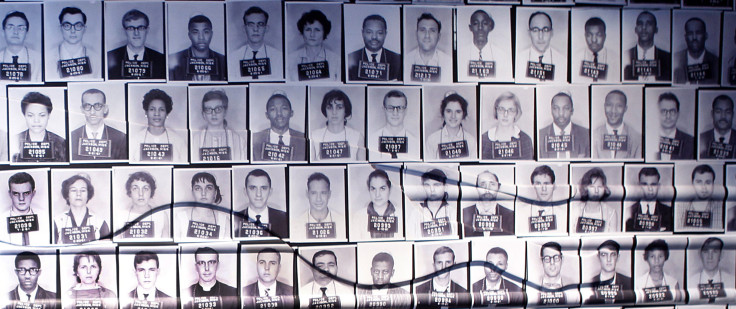
Do minorities pay more attention to crime than whites do, and if so, why? Those are the questions raised by a recent study conducted by media scholars the Pew Research Center, who declined to comment for this story. The study, whose scope was limited to three U.S. cities, found that Latinos in Denver, CO and Blacks in Macon, GA are more likely to “follow and discuss local crime.”
Open the covers of El Seminario, a bilingual weekly magazine in Northern New Mexico, and about 80 percent of the content is crime related. From the nabbings of narcos to an entire page of head shots entitled “Who got arrested?” the paper seems to follow the mantra that if it bleeds, it leads. The same could be said for dozens of pulp news publications across the Americas that follow a strict format: blood, boobs, and sports. El Seminario declined to comment for on this story.
Why are Latino audiences attracted to magazines like El Seminario, or the mainstream media in Denver? Critics argue that crime news consumption isn’t a consequence of consumer culture, but producer culture.
“When the media presents the image that ‘everything is bad’ that’s what’s going to get in your brain,” Julio Ricardo Varela, Digital Media Director of Futuro Media Group told the Latin Times. Varela is also a frequent contributor to Latino USA, a radio program on NPR, and the founder of Latino Rebels. In addition to raising his eyebrows at the methodology (“It feels hyperlocal”) he contrasted mainstream media coverage of crime and Latinos with the work of his colleagues at Latino USA.
“As a Latino-themed radio show, we present stories from our community [...] working with storytellers who are part of that community,” Varela said.
That community is driving new trends that could change the media landscape. By 2020, Hispanics will account for over half of all U.S. population growth, according Nielsen’s recent report, The Multicultural Edge. Authors of the study say that Latino Millennials have a huge consumer power and a desire for fast, culturally relevant media.
“Latinos are seeking media content from multiple platforms and in their preferred language of choice,” said Monica Gil, Nielson’s Senior VP of Multicultural Growth and Strategy. “There is a clear demand for more news outlets and websites that understand Latinos and the needs of this growing market.”
Fusion, a multicultural-focused media site mentioned in the Nielsen report, doesn’t have a “crime” section on it’s website. That doesn’t mean that you can’t find crime stories, but they’re covered in a different way. According to Varela, his audiences appreciate stories that cover crime, but go beyond it as well, as in letters from inmates and thoughts from Latino police officers.
Almost everyone can connect with the visceral fear of a shooting or a robbery. If that’s the only “relevant” coverage being offered, goes the argument, that’s what Latinos will consume and discuss. Yet when it comes to human interest stories, cultural perspective is a more significant driver in deciding what is worth reading. You’re probably less interested in a headline about Biggie if you’re from California, and less interested in a profile Tupac if you’re from New York. How can editors pull in a Latino audience?
Varela cites “A day in a the bodega,” a radio show produced by Latino USA that includes 8 segments about topics as disparate as gentrification, nutrition, migration, community, and cheese. Bodegas, or Latin-American groceries stories, are an ubiquitous feature of Latino life from New York to New Mexico, and an engaging organizing structure for Latino USA’s audience.
The glue that binds the bodega show together is Dominican-American bodega mogel Ramón Murphy. At one point in the episode, Murphy offers a simple piece of advice on running bodega that might be useful to the news editors in Macon and Denver.
“Find out what your customers like, and have it.”
© 2025 Latin Times. All rights reserved. Do not reproduce without permission.




